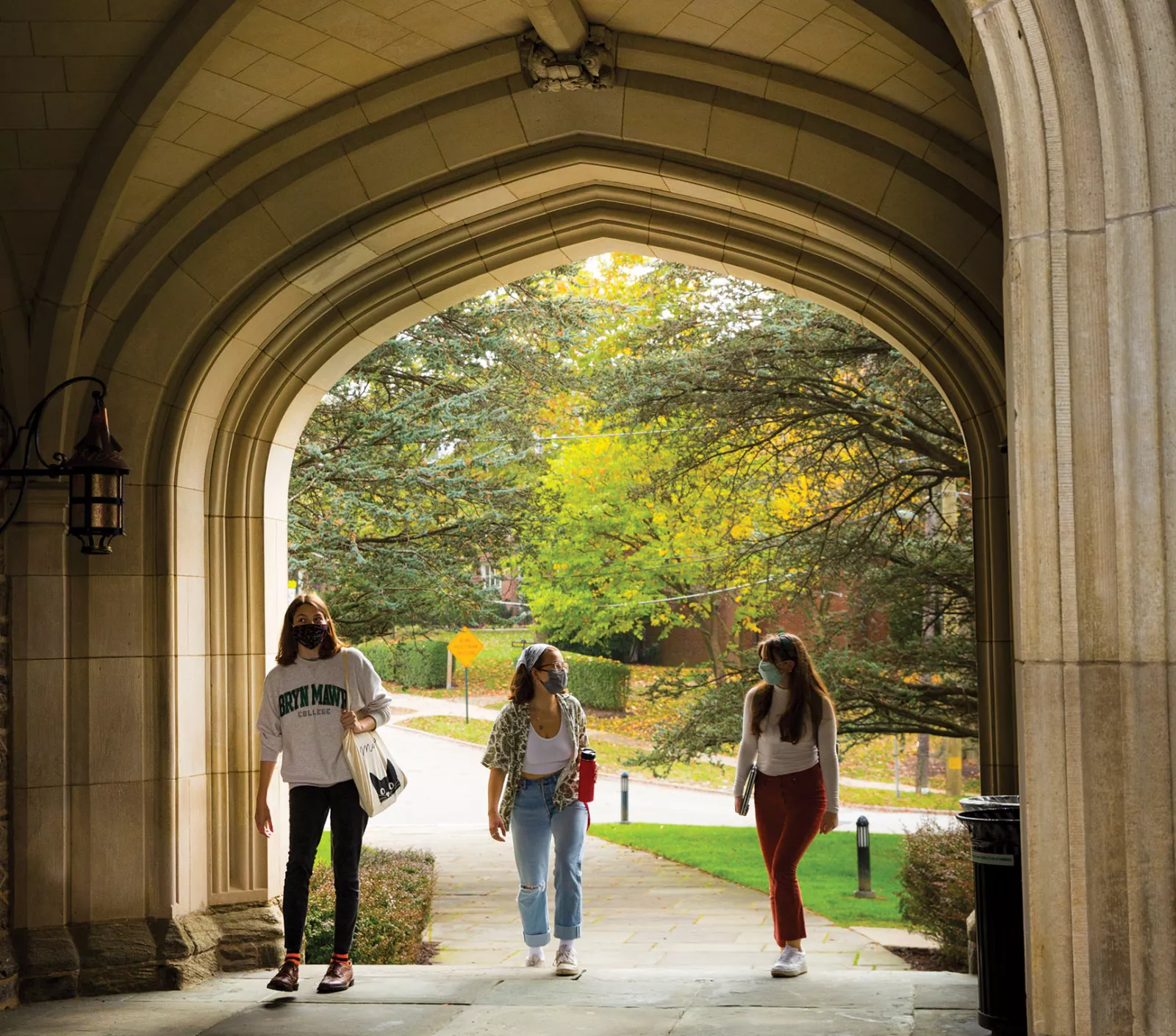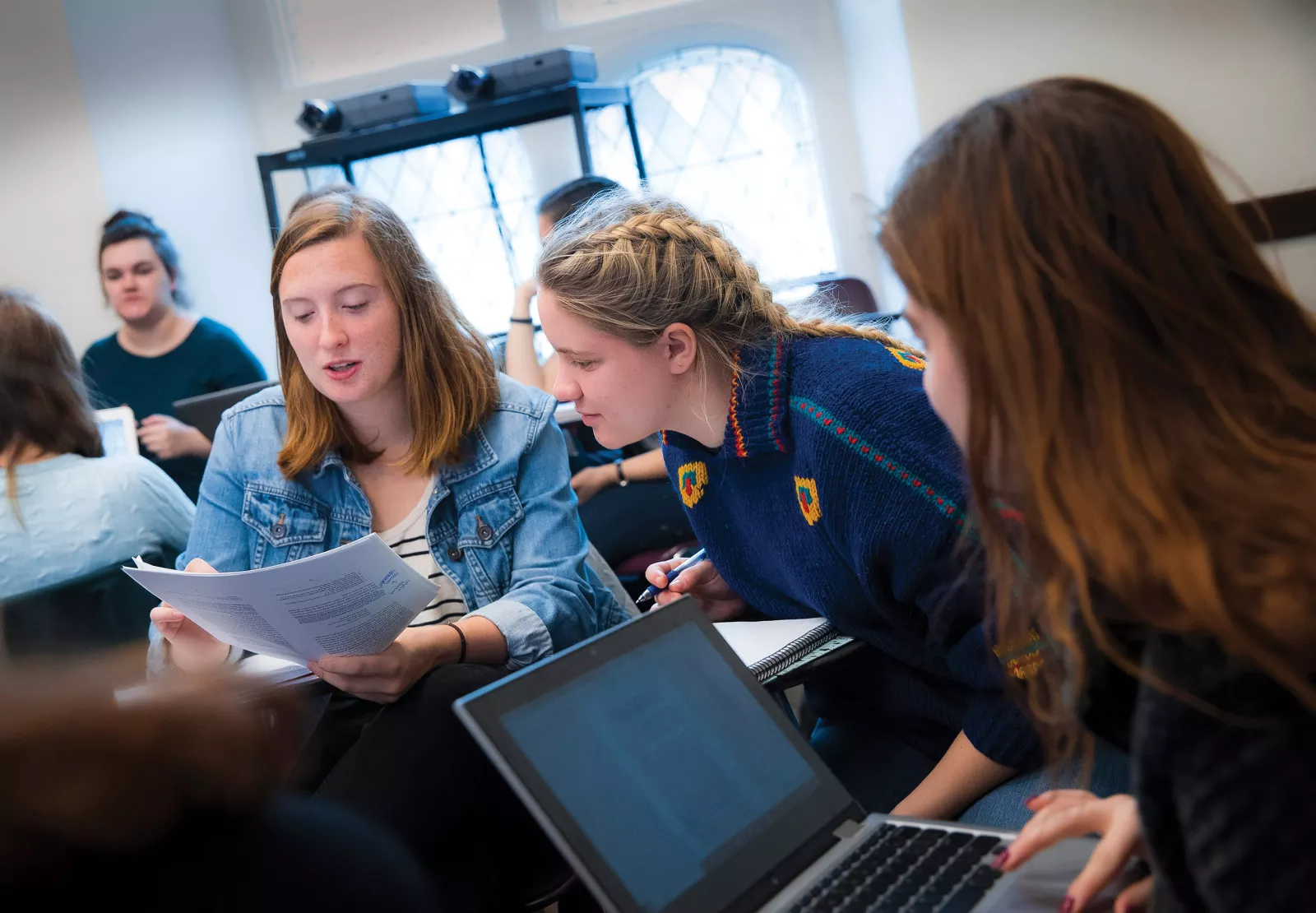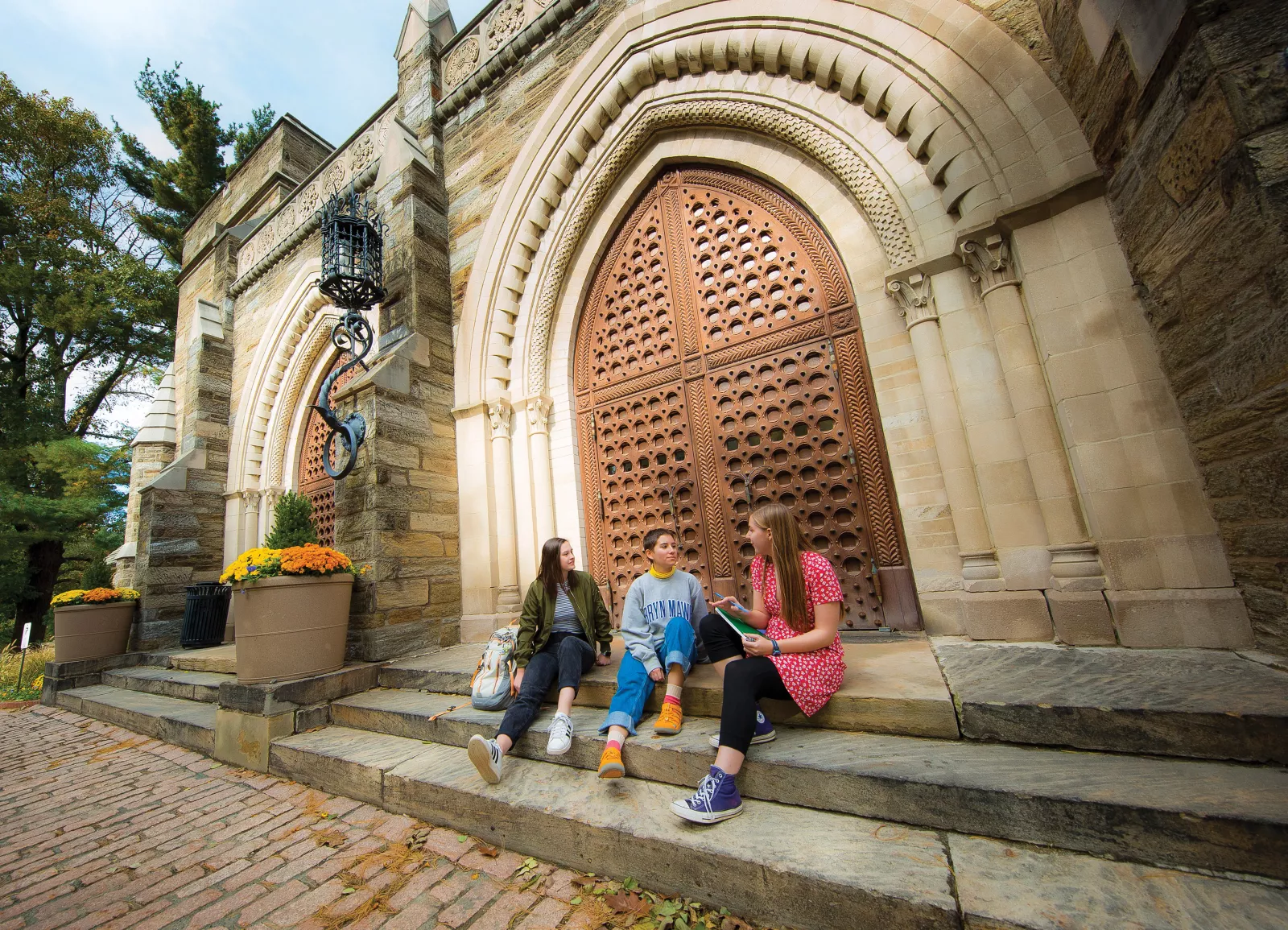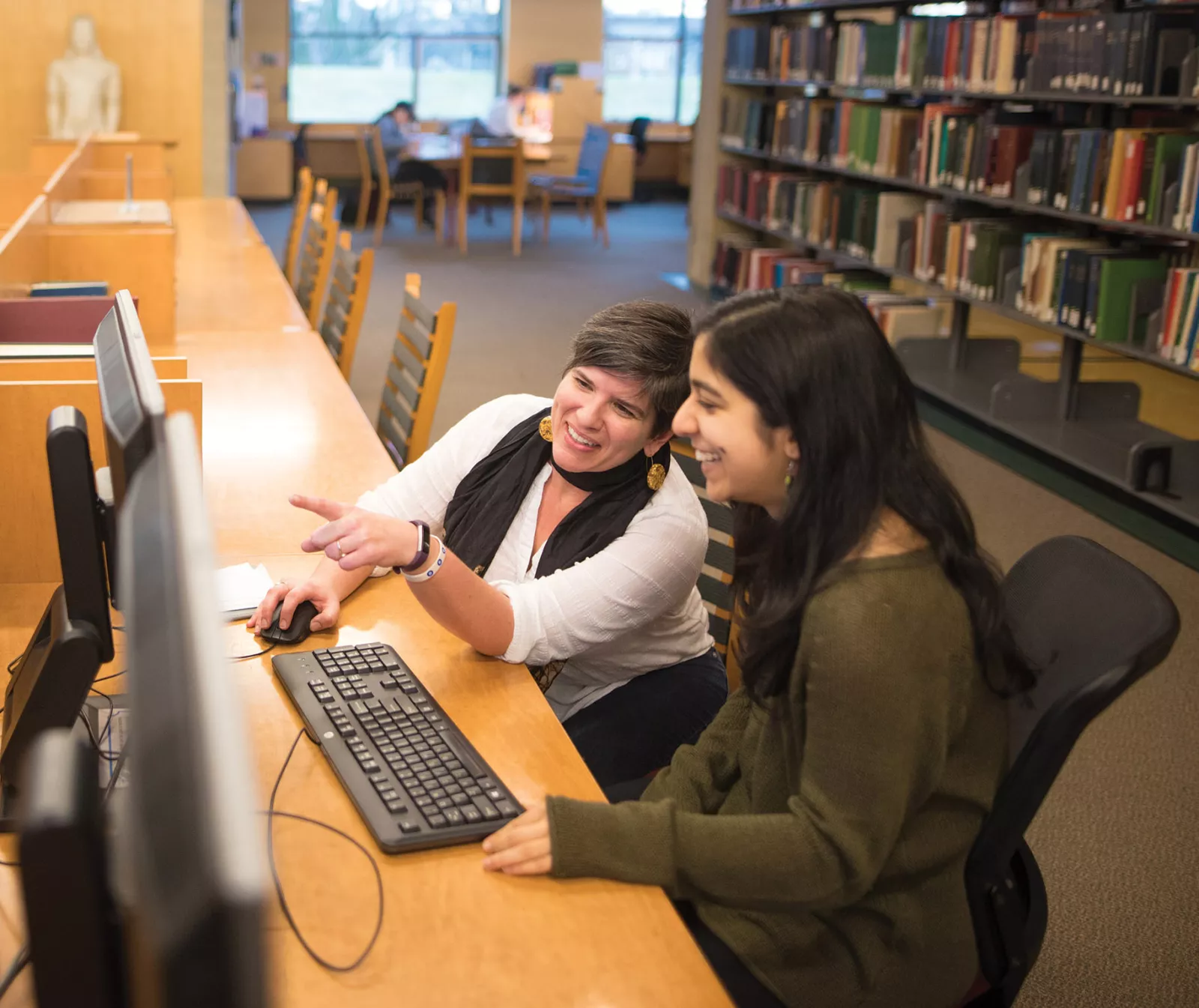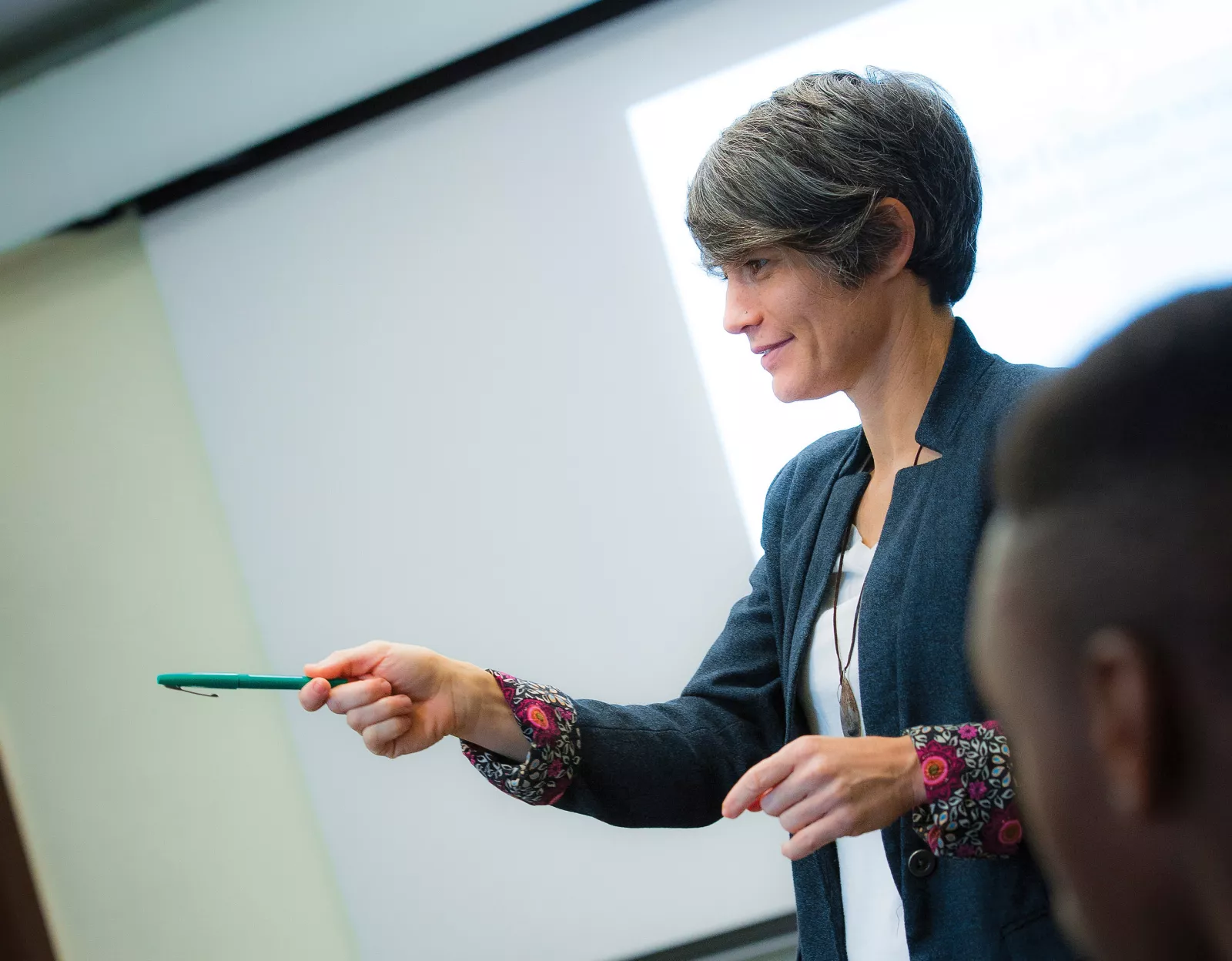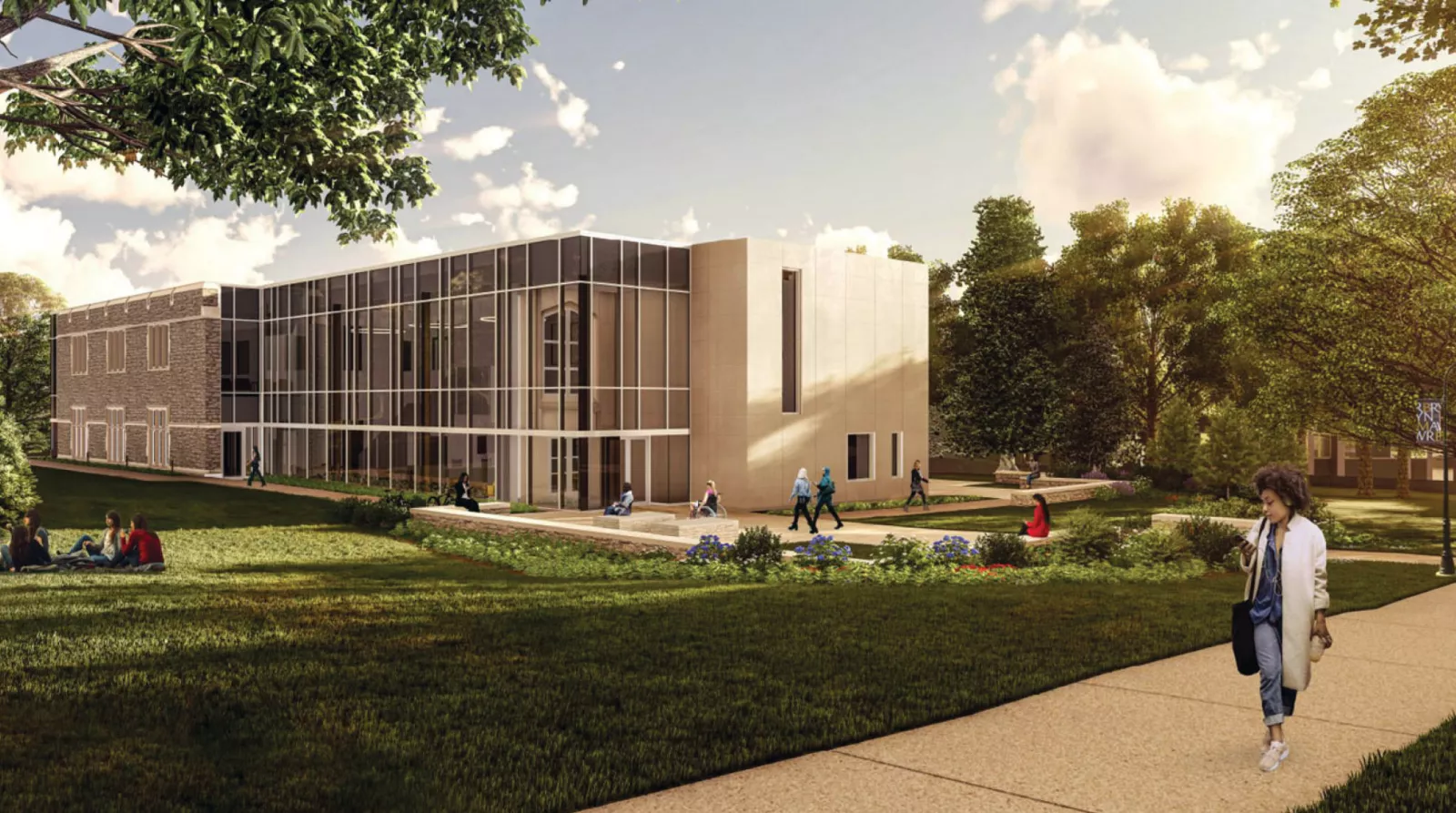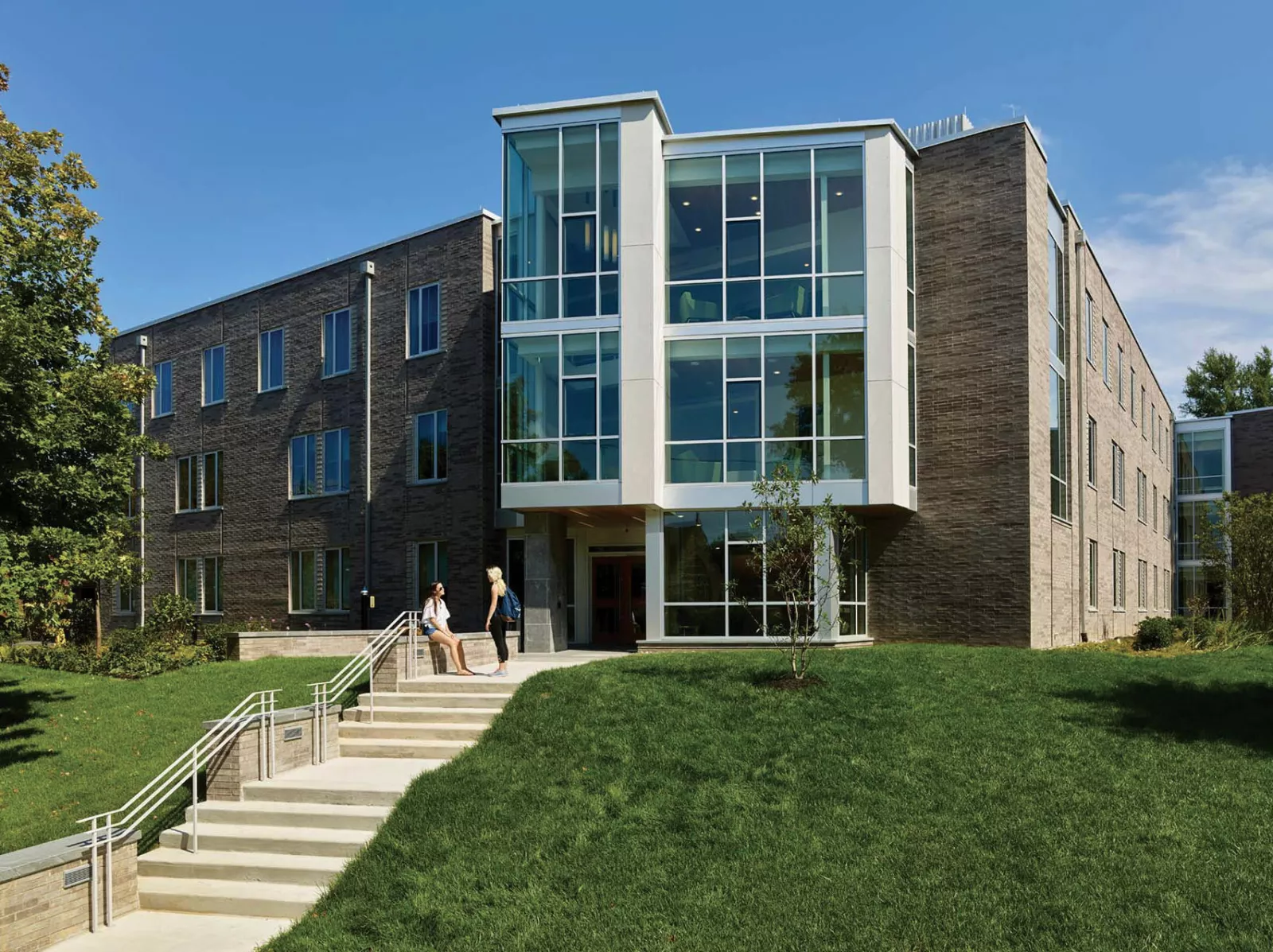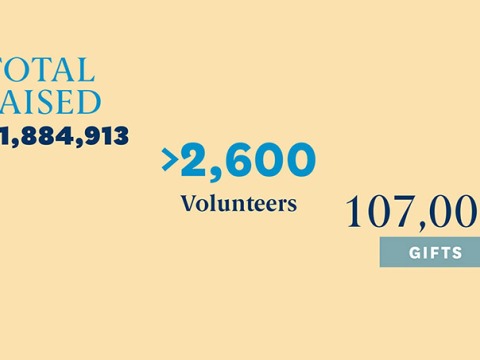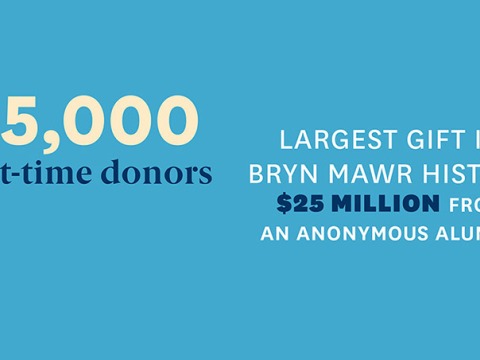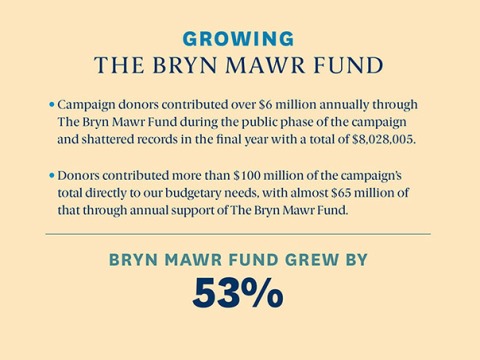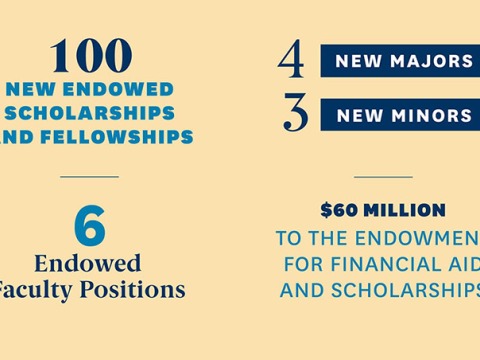
This Is Our Moment
Bryn Mawr is feeling the energy of 107,000 votes of confidence.
This fall, the Defy Expectation Campaign, which was publicly launched in 2016, came to a triumphant end, smashing its $250 million minimum goal. A total of $301 million was raised from more than 107,000 gifts, making it the most successful fundraising campaign in the College’s history.
The vast majority of donations were gifts of $100 or $50, with 5,000 people making their first-ever donation to the College. A scholarship challenge led to a set of young alums being able to endow a scholarship fund, including the first single-gender couple to put their name on a scholarship and the youngest Black alum to create an endowment. A $25 million gift from an anonymous donor, the largest in Bryn Mawr’s history, sparked new momentum in the campaign, with several $5 million gifts coming on its heels.
In the final year of the campaign, during the global pandemic, donors contributed more than $40 million, with more than $8 million in unrestricted funds and more than $4 million in direct pandemic relief gifts.
“Bryn Mawr is on a roll,” says Chief Alumnae/i Relations and Development Officer Bob Miller. “The momentum of the campaign and the momentum of the College coalesced for our donors and our volunteers—people who care deeply about the institution—and led directly to $301,884,913.”
SUPPORTING OUR EXTRAORDINARY STUDENTS
“We will continue to live our mission and our values, as well as evolve to meet the needs of future generations of students and give them the kinds of experiences that they will need to be as successful in the world as our current graduates. We will continue in a spirit of innovation and also excellence. However Bryn Mawr grows and changes, it will never let go of that really important value of delivering the best possible education for our students.” —Kim Cassidy
The daily experience of Bryn Mawr students informed every aspect of the campaign. Through the campaign’s resounding success, the College has been able to provide support and create opportunities for students to thrive on campus and be well prepared to accomplish what matters most to them in the wider world.
A key priority for the campaign was to make a Bryn Mawr education more accessible. With $60 million added to the endowment for financial aid and scholarships, the College can continue to meet full demonstrated financial need for all enrolled students. More than 100 new endowed scholarships and fellowships have also been established.
During the initial pandemic year, a financially challenging time for many, we were able to hold the tuition rate steady while increasing our financial aid commitment and providing additional supplemental grants to all students on need-based financial aid.
“Those summer experiences are really important,” says Dean of Undergraduate Studies Jennifer Walters. “Whether it’s Summer Science, doing research on their own, or an internship through the Career & Civic Engagement Center, all of those in-between experiences help a student curate their whole education—not only their in-class experience but also their work experience or their research experience.”
A commitment to students’ overall well-being and the campaign’s increases in budgetary support led to the creation of two new student-centered positions in the Pensby Center for Community Development and Inclusion. The assistant dean for student support and belonging promotes the success, retention, wellness, and sense of belonging for first-generation, low-income students and undocumented or DACAmented students. The assistant dean of intercultural engagement provides program leadership supporting diversity, equity, inclusion, and anti-racism through the Enid Cook ’31 Center.
For first-years, the THRIVE seminar, established through the campaign, helps students transition to college life and build their personal tool kits with an array of academic, communal, and social resources and strategies.
And for accepted students who come from under-resourced high schools that have not prepared them for such a rigorous curriculum, the College is launching a new bridge program called STEM in the Liberal Arts (STEMLA) Fellows to build skills and knowledge base.
“Having these programs that allow students to explore who they are but also feel supported in that exploration is something that I’m grateful our alumni invest in,” Walters says. “I am especially gratified that they invest in intercultural programming and in our work with first- gen students and students who are undocumented and come from mixed status families. Those students deserve to feel at home here, however we can make that happen.”
INVESTING IN OUR FACULTY
“The nature of knowledge is changing. It is becoming more interdisciplinary. I think it’s no accident that many of the new majors are more interdisciplinary. It’s reflecting this institution’s commitment to keeping up with the way that knowledge is changing, to make sure that our students are the best prepared that they can possibly be.” —Kim Cassidy
The campaign has added fuel to the curricular innovation that puts Bryn Mawr students ahead of the curve and makes their learning environment both rigorous and joyful. In many instances, initiatives already conceptualized by our scholar-teachers gained added momentum and grew in depth and vision with campaign support.
The College, for example, used new endowed support to create the International Initiatives grant program, through which faculty can apply for a grant for internationally oriented research. Faculty also were able to more fully develop the 360° Course Clusters, which combine interdisciplinary and experiential learning.
During the campaign, to meet students’ requests for 21st-century skills and knowledge, new majors in environmental studies, international studies, biochemistry and molecular biology, and neuroscience, as well as new minors in health studies, museum studies, and data science were created. The data science program, an interdisciplinary collaboration that includes related programming for students in all fields, was made possible with a transformational seed gift of $5 million and more than $1 million in additional gifts.
Both the data science and environmental studies programs “bridge the divide between STEM and the humanities in a vibrant way,” says Provost Tim Harte. “That is a reflection of where the College is going academically, and the popularity of the programs speak for themselves. Health studies is another area where we have that fascinating intersection of STEM and the humanities, with both a historian and a biologist among the faculty.”
The interdisciplinary nature of the new majors and minors allows students to connect their interests in a deeper academic way, adds Walters. “We are looking at data science and environmental science from a humanities perspective that also includes ethics, economics, and philosophy,” she says. “That’s a unique and important contribution that Bryn Mawr and Haverford, since some of these offerings are Bi-Co, are making.”
A $1 million gift to the Graduate School of Social Work and Social Research enabled the development of a trauma-informed curriculum that translates research on early adversity and trauma for children, adolescents, and young adults into effective practice models.
To enrich and diversify the faculty, the campaign endowed six faculty positions in environmental studies, international studies, chemistry, geology, and history of art. “Endowed positions are critical,” says Harte, in “giving us the stability and freedom to create a vision for the college in terms of where we head intellectually and academically.”
A LIVING, BREATHING HOME
“The new Student Life and Wellness Center will include a wide variety of student support services, including medical and counseling services, religious life, and our Pensby Center for Community Development and Inclusion. This co-location in the heart of campus will enable a greater focus on the whole student and new synergies across departments.” —Kim Cassidy
Bryn Mawr is known as one of the most beautiful college campuses in the world. It is also a living, breathing home and a site of learning and discovery for our students and faculty. Preserving the College’s iconic campus and creating modern facilities that match the ambitions and changing needs of our community was a top priority of Defy Expectation.
To enhance student life, the College invested more than $103 million in buildings and infrastructure over the course of the Campaign, with more than $25 million raised for new capital projects such as the Park Science Center renovation, a new dorm, and the new Student Life and Wellness Center.
The renovation of Park Science Center created flexible teaching spaces, added a makerspace and study/seminar rooms with supportive technology to enhance student creativity and collaboration. It also opened up the building to showcase our STEM dominance and to more fully support the disciplinary and interdisciplinary excellence of faculty research.
The Johanna Alderfer Harris ’51 Atrium in Park has become a favorite place for students to study and work together regardless of their majors. The Albano Modern Physics Laboratory and the fully renovated electronics lab provide Bryn Mawr students with expanded opportunities for research and for conducting experiments under controlled conditions.
The “New Dorm,” the first new residence hall in nearly 50 years, provides 101 single dorm rooms, study spaces, and student lounges. It is home to the Enid Cook ’31 Center (ECC), a residential space that houses the Black Cultural Center (formerly in Perry House) for members of the Sisterhood, BACaSO, Mujeres*, and Zami as well as to those students who share a cultural background or personally identify with the ideals of the ECC.
Perry Garden was created on the site of the former Perry House, making a beautiful space for visitors and the campus community to honor the history of the former residence hall and its importance to Bryn Mawr.
The new Student Life and Wellness Center, slated to open in early 2022, will give students ready access to the resources they need to be successful in the classroom and in the community. As well as housing medical and counseling services, the multicultural center, and religious and spiritual life, the building will provide student kitchens and informal gathering spaces. Thanks to an additional $5 million gift, the entire Career and Civic Engagement Center will also be housed there.
“The new building is kind of a game-changer for us,” says Walters, “because it brings the really key student services and programs into the center of campus. Having a building that’s dedicated to student development and health right in the middle of campus reflects the importance of well-being as the thing at the center of a student’s life that makes everything else possible.”
FOR ALUMNAE/I
These resources for Mawrters were developed during the campaign:
- Mawrter Connect
- Tapestry (our Alumnae/i of Color affinity group)
- Alumnae/i Connections e-newsletter
- Family Leadership Circle
- 35+ new domestic and international alumnae/i clubs
Published on: 01/06/2022
